Related Research Articles
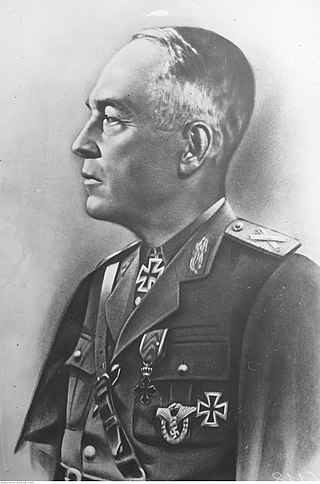
Ion Antonescu was a Romanian military officer and marshal who presided over two successive wartime dictatorships as Prime Minister and Conducător during most of World War II. Having been responsible for facilitating the Holocaust in Romania, he was tried for war crimes and executed in 1946.
The Kingdom of Romania, under the rule of King Carol II, was initially a neutral country in World War II. However, Fascist political forces, especially the Iron Guard, rose in popularity and power, urging an alliance with Nazi Germany and its allies. As the military fortunes of Romania's two main guarantors of territorial integrity—France and Britain—crumbled in the Fall of France, the government of Romania turned to Germany in hopes of a similar guarantee, unaware that the then-dominant European power had already granted its blessing to Soviet claims on Romanian territory, in a secret protocol of 1939's Molotov–Ribbentrop Pact.
The pursuit of Nazi collaborators refers to the post-World War II pursuit and apprehension of individuals who were not citizens of the Third Reich at the outbreak of World War II but collaborated with the Nazi regime during the war. Hence, this article does not cover former members of the NSDAP and their fates after the war.
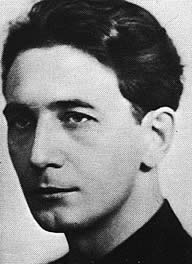
Horia Sima was a Romanian fascist politician, best known as the second and last leader of the fascist paramilitary movement known as the Iron Guard. Sima was also the vice president of the council of ministers and de facto co-leader in Ion Antonescu's National Legionary State. Sima had previously served briefly as State Secretary of Education under Gheorghe Tătărescu in 1940, and as a short-lived Minister of Religion and Arts in the government of Ion Gigurtu.

Mihai Antonescu was a Romanian politician who served as Deputy Prime Minister and Foreign Minister during World War II, executed in 1946 as a war criminal.
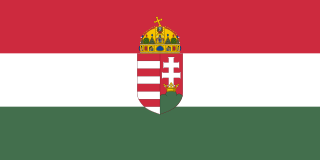
Northern Transylvania was the region of the Kingdom of Romania that during World War II, as a consequence of the August 1940 territorial agreement known as the Second Vienna Award, became part of the Kingdom of Hungary. With an area of 43,104 km2 (16,643 sq mi), the population was largely composed of both ethnic Romanians and Hungarians.

The Iași pogrom was a series of pogroms launched by governmental forces under Marshal Ion Antonescu in the Romanian city of Iași against its Jewish community, which lasted from 29 June to 6 July 1941. According to Romanian authorities, over 13,266 people, or one third of the Jewish population, were massacred in the pogrom itself or in its aftermath, and many were deported. It was one of the worst pogroms during World War II.
The Treznea massacre occurred in the village of Treznea, Sălaj in north-western Transylvania on 9 September 1940, in the immediate aftermath of the Second Vienna Award, when Romania ceded Northern Transylvania to Hungary. The massacre was perpretated by Hungarian Army troops with aid from some locals; 93 ethnic Romanians and Jews were killed.
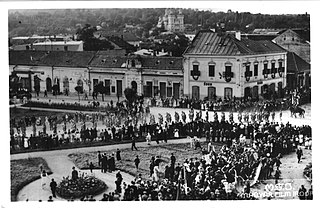
The events of the Ip massacre escalated in the early hours of 14 September 1940, in Ipp,, Northern Transylvania. After two Hungarian soldiers died there in an accidental explosion, rumors spread that they had been killed by Romanians. After another incident the Royal Hungarian Army, influenced by the rumor, indiscriminately massacred around 150 ethnic Romanians in the nearby locations and surrounding areas.
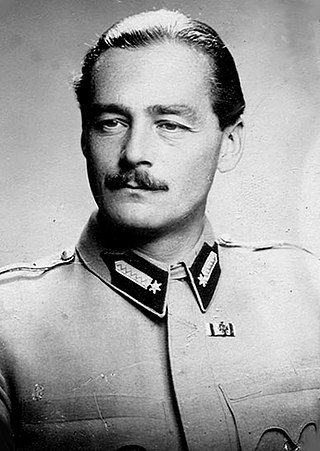
Count Albert Wass de Szentegyed et Czege was a Hungarian nobleman, forest engineer, novelist, poet, member of the Wass de Czege family.
Valerian Trifa was a Romanian Orthodox cleric and fascist political activist, who served as archbishop of the Romanian Orthodox Church in America and Canada. For part of his life, he was a naturalized citizen of the United States, until he was stripped of his American citizenship for lying about his involvement in the murder of hundreds of Jews during the Holocaust and World War II.
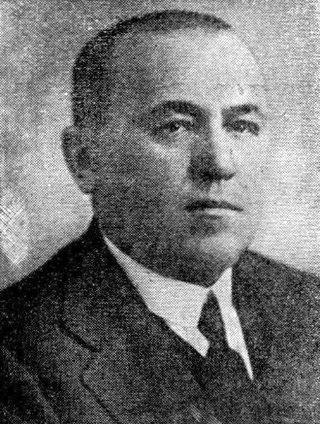
Emil Hațieganu was a Romanian politician and jurist, a prominent member of the Romanian National Party (PNR) and of its successor, the National Peasants' Party (PNȚ); he was physician Iuliu Hațieganu's brother. Before his arrest, he was an honorary member of the Romanian Academy.

Eugen Cristescu was the second head of the Kingdom of Romania's domestic espionage agency, the Secret Intelligence Service (SSI), forerunner of today's SRI, convicted in 1946 as a war criminal. He previously served as head of Siguranța Statului, the secret police.
Corneliu Calotescu was a Romanian major-general during World War II.
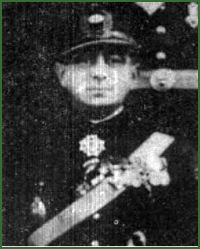
Constantin Petrovicescu was a Romanian soldier and politician, who served as Interior Minister from September 14, 1940 to January 21, 1941 during the National Legionary State.
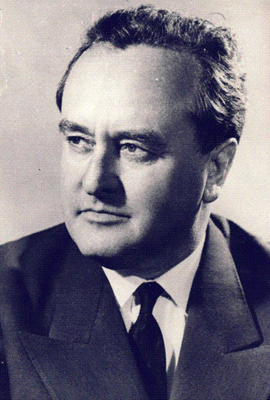
Avram Bunaciu was a Romanian communist politician who served as the Minister of Justice, Minister of Foreign Affairs and in march 1965 was for 5 days the acting President of the State Council of Romania.
Modest Isopescu was an Austro-Hungarian-born Romanian officer, administrator and convicted war criminal.

Nicolae Macici was a Romanian lieutenant general during World War II, when he commanded the Romanian First Army, first on the side of the Axis (1941–1944) and then on the side of the Allies (1944–1945). Convicted in 1945 by the Bucharest People's Tribunal as a war criminal for his role in the Odessa massacre, he died at Aiud Prison five years later.

Gheorghe Alexianu was a Romanian lawyer, high school teacher and associate professor who served as governor of Transnistria between 1941 and 1944. In 1946, he was accused and convicted of war crimes, crimes against peace and crimes against humanity; he was sentenced to death by the Bucharest People's Tribunal, and was executed on June 1, 1946 by shooting.
Following the end of the Second World War, Romania was one of the 4 countries to be officially acknowledged as an "ally of Hitlerite Germany" by the 1947 Paris Peace Treaties. The treaty of peace with Romania obliged the country to apprehend and bring to trial people accused of "war crimes and crimes against peace and humanity".
References
- Report of the International Commission on the Holocaust in Romania (RICHR) submitted to President Ion Iliescu in Bucharest on November 11, 2004, and accepted by the Romanian government.
- Zoltan Tibori Szabo Transylvanian jewry during the postwar period, 1945-48 (Part 2) "The People's Tribunals, Intra-Community Accusations and Inquiries" Radio Free Europe Details on the Northern Transylvanian People's Tribunal in Cluj